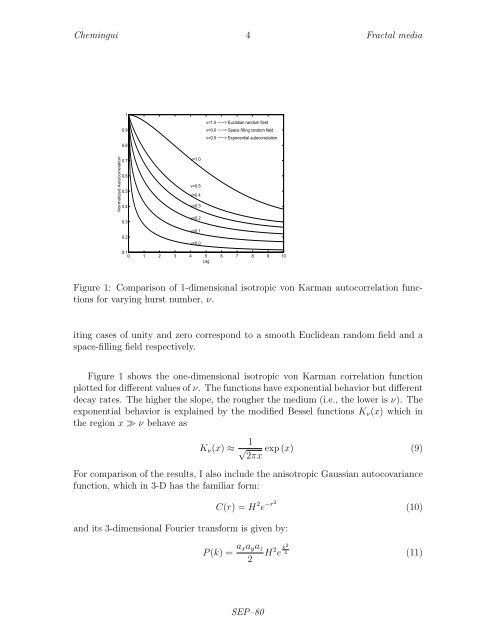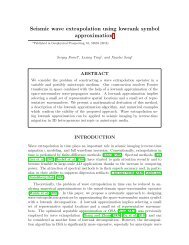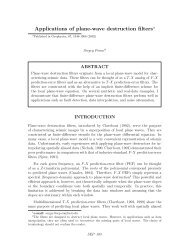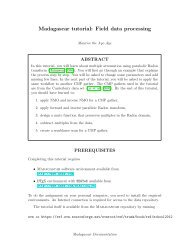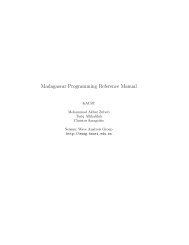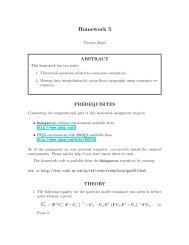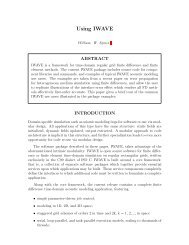Modeling 3-D anisotropic fractal mediaa
Modeling 3-D anisotropic fractal mediaa
Modeling 3-D anisotropic fractal mediaa
You also want an ePaper? Increase the reach of your titles
YUMPU automatically turns print PDFs into web optimized ePapers that Google loves.
Chemingui 4 Fractal media<br />
1<br />
0.9<br />
0.8<br />
v=1.0 −−−> Euclidian random field<br />
v=0.0 −−−> Space filling random field<br />
v=0.5 −−−> Exponential autocorrelation<br />
Normalized Autocorrelation<br />
0.7<br />
0.6<br />
0.5<br />
0.4<br />
0.3<br />
v=1.0<br />
v=0.5<br />
v=0.4<br />
v=0.3<br />
v=0.2<br />
0.2<br />
v=0.1<br />
v=0.0<br />
0.1<br />
0 1 2 3 4 5 6 7 8 9 10<br />
Lag<br />
Figure 1: Comparison of 1-dimensional isotropic von Karman autocorrelation functions<br />
for varying hurst number, ν.<br />
iting cases of unity and zero correspond to a smooth Euclidean random field and a<br />
space-filling field respectively.<br />
Figure 1 shows the one-dimensional isotropic von Karman correlation function<br />
plotted for different values of ν. The functions have exponential behavior but different<br />
decay rates. The higher the slope, the rougher the medium (i.e., the lower is ν). The<br />
exponential behavior is explained by the modified Bessel functions K ν (x) which in<br />
the region x ≫ ν behave as<br />
K ν (x) ≈ 1 √<br />
2πx<br />
exp (x) (9)<br />
For comparison of the results, I also include the <strong>anisotropic</strong> Gaussian autocovariance<br />
function, which in 3-D has the familiar form:<br />
and its 3-dimensional Fourier transform is given by:<br />
C(r) = H 2 e −r2 (10)<br />
P (k) = a xa y a z<br />
H 2 e k2 4 (11)<br />
2<br />
SEP–80


